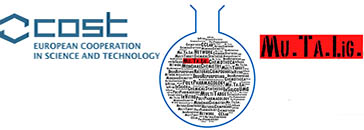
General information
| Name: Holger |
| Surname: Stark |
| E-mail: stark@hhu.de |
| Cell phone number with international prefix: +49 211 8110478 |
| Country: Germany |
| Affiliation: Heinrich Heine University Düsseldorf |
| Gender: F □ M X |
| Year of the PhD title: 1991 |
| Personal web page: http://www.pharmazie.hhu.de/en/institutes/institute-for-pharmaceutical-and-medicinal-chemistry/research-groups/research-group-prof-dr-holger-stark.html |
| Previous COST participation: No □ Yes X |
List of 10 selected publications within last 5 years
| 1. M. Tomasch, J. S. Schwed, K. Kuczka, S. Meyer dos Santos, S. Harder, R. M. Nüsing, A. Paulke, and H. Stark. Fluorescent Human EP3 Receptor Antagonists. ACS Med. Chem. Lett. 2012, 3, 774-779 |
| 2. . Hofmann, C. B. Rödl, A. S. Kahnt, T. J. Maier, A. A. Michel, M. Hoffmann, O. Rau, K. Awwad, M. Pellowska, M. Wurglics, M. Wacker, A. Zivkovic, I. Fleming, M. Schubert-Zsilavecz, H. Stark, G. Schneider, and D. Steinhilber. Molecular Pharmacological Profile of a Novel Thiazolinone-Based Direct and Selective 5-Lipoxygenase Inhibitor. Br. J. Pharmacol. 2012, 165, 2304-2313. |
| 3. . Schiffmann, D. Hartmann, S. Fuchs, K. Birod, N. Ferreiròs, Y. Schreiber, A. Zivkovic, G. Geisslinger, S. Grösch, and H. Stark. Inhibitors of Specific Ceramide Synthases. Biochimie 2012, 94, 558-565. |
| 4. B. Sadek, J. S. Schwed, D. Subramanian, L. Weizel, M. Walter, A. Adem, and H. Stark. Non-imidazole Histamine H3 Receptor Ligands Incorporating Antiepileptic Moieties. Eur. J. Med. Chem. 2014, 77, 269-279 |
| 5. P. Panula, P. L. Chazot, M. Cowart, R. Gutzmer, R. Leurs, W. L.S. Liu, H. Stark, R. L. Thurmond, and H. L. Haas. International Union of Basic and Clinical Pharmacology. XCVIII. Histamine Receptors. Pharmacol. Rev. 2015, 67, 601-655 |
| 6. K. Sander, E. Galante, T. Gendron, E. Yiannaki, N. Patel, T. L. Kalber, A. Badar, M. Robson, S. P. Johnson, F. Bauer, S. Mairinger, J. Stanek, T. Wanek, C. Kuntner, T. Kottke, L. Weizel, D. Dickens, K. Erlandsson, B. F. Hutton, M. F. Lythgoe, H. Stark, O. Langer, M. Koepp, and E. Årstad. Development of Fluorine-18 Labeled Metabolically Activated Tracers for Imaging of Drug Efflux Transporters with PET. J. Med. Chem. 2015,58, 6058-6080. |
| 7. K. Nikolic, L. Mavridis, O. M. Bautista-Aguilera, J. Marco-Contelles, H. Stark; M. do Carmo Carreiras, I. Rossi, P. Massarelli, D. Agbaba, R. R.Ramsey, and J. B. O. Mitchell. Predicting Targets of Multipotent Compounds against Neurological Diseases Using Cheminformatic Methodology. J. Comp. Aided Mol. Des. 2015, 29, 183-198 |
| 8. K. Nikolic, D. Agbaba, and H. Stark. Pharmacophore Modeling, Drug Design and Virtual Screening on Multi-Targeting Procognitive Agents Approaching Histaminergic Pathways. J. Taiwan. Inst. Chem. E. 2015, 46, 15-29 |
| 9. S. B. M. Kretschmer, S. Woltersdorf, C. B. Rödl, D. Vogt, A.-K. Häfner, D. Steinhilber, H. Stark and B. Hofmann. Development of Novel Aminothiazole-comprising 5-Lipoxygenase Inhibitors. Fut. Med. Chem. 2016, 8, 149-164 |
| 10. F. Imeri, S. Schwalm, R. Lyck, A. Zivkovic, H. Stark, B. Engelhardt, J. Pfeilschifter, and A. Huwiler. Sphingosine Kinase 2 Deficient Mice Exhibit Reduced Experimental Autoimmune Encephalomyelitis: Resistance to FTY720 but not ST-968 Treatments. Neuropharmacology 2016, 105, 341-350. |
Main skills and expertise (up to 5)
| 1.Medinical Chemistry |
| 2. Histamine receptor subtypes (mainly H3 and H4) |
| 3.Dopamine receptor sibtypes (mainly D2 and D3) |
| 4. Arachindonic acid pathway |
| 5. Sphingolipids |
Main equipment/facilities available in the participants’ lab (up to 5)
| 1. Synthesis (microwace, autoclave etc.) |
| 2. Purification and Analytics (flash chromatography etc., lyophilisation, NMR etc.) |
| 3. Cell cultures |
| 4. Radioligand binding assays (beta counter, harvester etc.) |
| 5. Fluorescence reader with robotic system |
Short personal activity proposal for the COST Action CA15135 (max 1000 characters)
| We are working on a number of GPCRs as well as on enzymatic targets. The combination of targets is mostly disease-oriented. We can combine a number of different on- and off-targets in one molecule and have experience with further steps in drug development. In addition to affinity, efficacy, residence time etc. get more and more important with our studies. Pitolisant, the first H3 receptor antagonist with market authorization, was developed in our lab, actually it will serve as orphan drug as therapeutic on narcolepsy. Further therapeutic approaches are in late clinical stage. In the synthesis we work together with different groups in drug design and computational chemistry. We can synthesize some reference compounds, but mostly focus on new lead developments.
We do have different overexpressing cell systems in S1 labs and mostly perform membrane studies on permanent and transient expression systems. Screening is performed on displacement assays based on radioactive or fluorescent ligands. Screening on different systems can be performed for different labs. We only do in vitro screening. Enzyme screening will be increased. Since we are working on the development of new chemical entities as well as on biological screening it is our strong interdisciplinary interest to work and contribute to WG1 and WG 2 as well as have a tight co-operation with WH3 and WG4. As Editor-in-Chief for the Archiv der Pharmazie I can organize a hot topic issue in the near future. |
Work Group preference: score from 1 (preferred) to 4 (not preferred)
| Work Group of the CA15135 COST Action | Score |
| WG1: Development of new chemical entities | 1 |
| WG2: Selection of biological targets and assessment of biological data | 1 |
| WG3: Development of chemical databases | 3 |
| WG4: Development of Computational methods for multiple ligand design and discovery | 3 |
